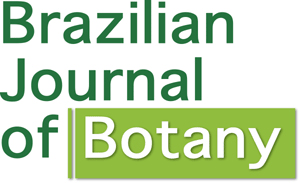The lectin of the red marine alga Vidalia obtusiloba was purified by a combination of ammonium sulphate precipitation, ion-exchange chromatography on DEAE-cellulose and affinity chromatography on cross-linked guar gum. The lectin preferentially agglutinated native and bromelain-treated human group O erythrocytes. The haemagglutinating activity revealed that the lectin was dependent on divalent cations (Ca++ or Mn++) and was shown to be inhibited by N-acetyl-galactosamine, D-galactosamine, alpha-lactose and D-galactose and by the glycoprotein porcine stomach mucin. The molecular mass of the lectin, estimated by gel filtration, was 78.9 kDa while by SDS-PAGE, in the presence of beta-mercaptoethanol, the lectin exhibited two different protein subunits with Mr of 59.6 and 15.2 kDa, suggesting that the lectin is a dimeric protein. Isoelectric focusing revealed the presence of a simple acidic protein with an isoelectric point between 4 and 5. The purified lectin showed a carbohydrate content of 43.2% and a predominance of the amino acids Asp/Asn, Glu/Gln and Leu. The energy of activation (deltaG') for the denaturation of the lectin was estimated to be 25.4 kcal.mol-1 at 90 ºC. Immunochemical assays using a rabbit antiserum raised against the purified lectin of V. obtusiloba showed that it was possible to detect the presence of the lectin at different steps of the purification process. Western blotting of SDS-PAGE gels showed immunostaining of only the larger of the lectin subunits.
hemagglutinin; lectin; protein; red marine alga






